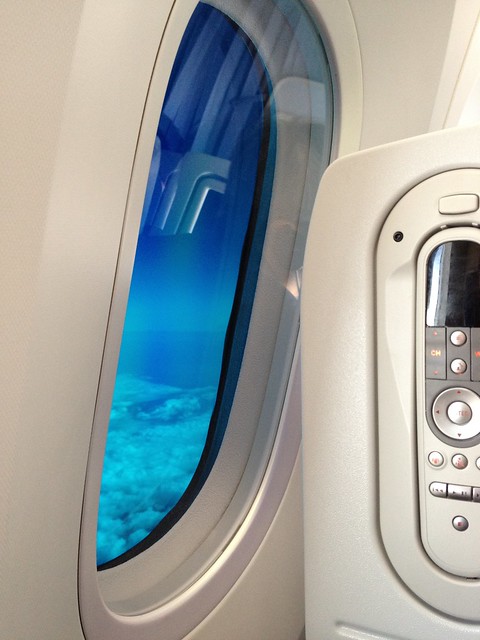Throughout our time on the Gondola Project, we’ve seen many transport systems install smart glass windows (i.e. Morizo Gondola in Japan and Bukit Panjang LRT in Singapore). However, these systems did not offer users the ability to control when the glass becomes “frosted” nor the amount of “frostiness”.
Enter Boeing’s newest aircraft, the 787 Dreamliner. These planes now feature what they like to call, “electrochromic shades”.
Passengers can now choose and adjust how transparent they want their windows to be (see video below). While the “electrochromic shades” term sounds a lot like a marketing buzz word, the company is quick to point out that this design was built to improve passenger comfort and fun. And who can doubt them? I’m not sure about you, but if I boarded a plane with this tinting system, I’d certainly let all my friends and family know about it.
This Boeing case study is a great example of how innovative companies and technologies are constantly undergoing minor upgrades to improve passenger experience — something that is often lacking in the field of public transit.
While user-controlled smart glass windows cannot and should not be replicated on all transit vehicles, this feature can certainly be translated into aerial gondola systems.
Giving passengers the option to adjust the level of brightness in a cabin may not convert hordes of auto commuters into transit riders, but perhaps anything that adds a bit of “personalization” and “fun” into the often dreary public space of a transit vehicle is a welcome site.


4 Comments
When it comes to transit…especially land-based ones I’ve often longed for the ability to clean the outside of my window so that I can see where I am at stop-wise…or just have one of those fancy “next stop…blah blah blah” LED signs with or without an accompanying recorded announcement (preferably narrated by that friendly British lady who tells my car where to go)
Image that… user operated windshield wipers! Would be a great option to have during those snowy winter days
I’d take removing bus wraps.
This would be wonderful for air travel – how often are you blinded by the sun when you are above the clouds? I hate having to shut the window shutter because I do want to see outside and wearing sunglasses looks stupid & means you cannot see anything in the cabin. What a great idea!